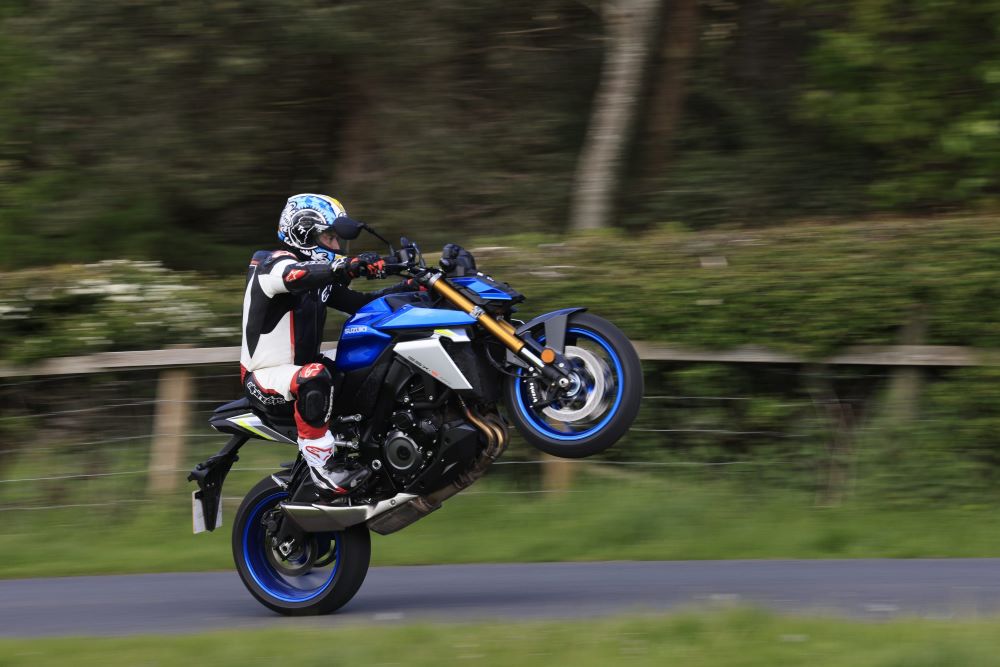Anti-wheelie Control System in Bikes: Types, Importance & Benefits

Before you delve deeper into understanding the mechanism of an anti-wheelie system, let's understand how a motorcycle performs a wheelie.
You can perform a wheelie with any vehicle, but it is most common with bikes. Wheelie is a stunt activity where you lift the motorcycle's front wheel off the ground with acceleration.
Now that you know these terms, let's understand how a motorcycle anti-wheelie control works.
What Is an Anti-Wheelie Control System?
For the ease of better understanding, let’s break down this term – anti-wheelie.
Anti-wheelie control is a mechanism that helps in preventing wheelies. This feature is available in a wide range of motorcycles nowadays. You can find it in beasts such as the 2023 Ducati Diavel V4 and 600s like Aprilia RS660.
How Does Anti-Wheelie Control System Work?
Anti-wheelie system works with various other features and sensors in a motorcycle. This system puts various inputs gathered from wheel sensors and lean angles into work. Additionally, it monitors the difference between the rotational speeds of both wheels. It then detects front wheel rise and reduction of control and grip on the track or road.
The traction control system lowers engine torque, limiting the wheelie's height. This depends on the settings set by the rider.
What Are the Types of Anti-Wheelie Control Systems?
There are two types of anti-wheelie systems. While one is more expensive than the other one, price is not the only thing that makes a difference. Let's dig deeper into each type to better understand which type suits your riding style.
Basic: Budget motorcycles employ a rudimentary anti-wheelie system that works with traction control. This system relies on ABS or anti-lock braking system rings to monitor the speeds of the front and rear wheels. When it detects any mismatch between speeds, it cuts off fuel to the engine.
Advanced: The second type is a more advanced system that considers the Inertial Measurement Unit (IMU) and front suspension sensors instead of relying entirely on ABS rings. This feature is available mostly in bikes in higher price ranges and is ideal for experienced riders.
What Is the Importance of an Anti-Wheelie System?
Anti-wheelie control bikes are ideal for experienced riders who want to ride hard without worrying about unintentional hazards with the safety net of traction control. With an anti-wheelie system, you can keep your bike in control and ride to the fullest.
This system is beneficial if you upgrade from a 300cc – 400cc motorbike to 600cc- 750cc. It helps you adjust to the sudden upgrade in power. Also, you can learn wheelies with an anti-wheelie control system, as you don't have to fear your bike tripping backwards.
What Are the Advantages of Anti-Wheelie System?
An anti-wheelie system is a great tool for pro-bikers. Find out the benefits of this system:
Provides immediate power by effortlessly opening the throttle fully with a single motion of your wrist
Enables quicker attainment of higher RPMs
Helps in maintaining your posture without requiring you to bend in order to engage the full throttle
What Are the Disadvantages of the Anti-Wheelie System?
Now that you have learned about an anti-wheelie system and its benefits, take a look at the downsides of an anti-wheelie system. Like every other tool and technology, this system also has its drawbacks.
Anti-wheelie control can slow down acceleration if it is not well calibrated.
This can become a major problem, especially on a racing track as it can slow you down on the corner exit. This is the reason why a lot of manufacturers rely heavily on aerodynamic wings.
Anti-wheelie control system lets riders experience the full potential of their bikes while safeguarding them from flipping backwards. However, as a rider, you must ride carefully and not rely entirely on the safety features.


















